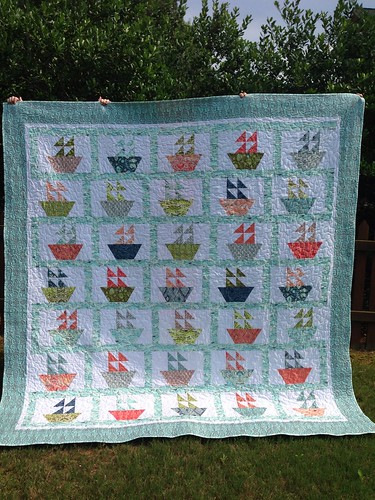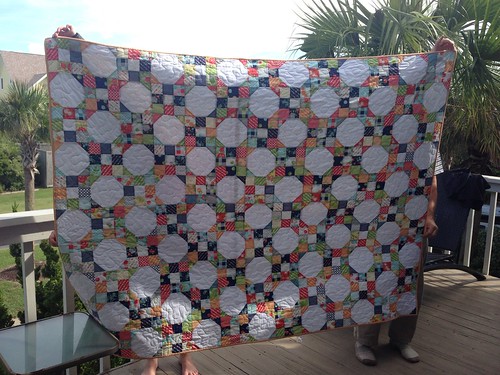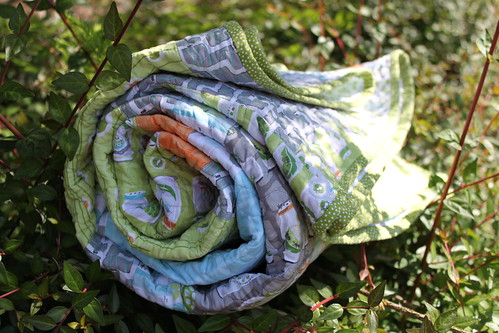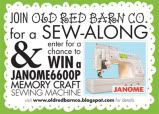Announcing The Stash Bash Sewing and Quilting Retreat April 11-14, 2013 at the Calvin Center in Atlanta, GA!
As usual, I am on a complete high following an amazing Sewing Summit trip. Getting together in real life with my online sewing friends is like a dream come true. The only huge disappointment of the weekend was my own lack of energy to stay up all hours in the open sewing roomlaughing with all of my friends getting work done. You know what I really want in addition to my annual beloved Sewing Summit? A weekend where I can hang out with my tweeple, make a dent in my WIPs, and not worry about where I need to be when or what to wear. Oh, and also it can't take too much out of my stash-building fabric-loving budget.
Enter The Stash Bash. Now why in the world would I want to plan an event when I have a perfectly busy job raising three kids and trying to longarm quilt for my clients? Well, I love to plan events and bring people together.
Before becoming an at-home mom and longarm quilter, I was a corporate event manager. The last job I had in the industry was as the global Corporate Trade Show Manager for UPS. I am a people person and I would much rather be on a busy trade show floor than in a cubicle. I loved spending my work days traveling around the country talking to people about our products and technology. I loved flying through the airports and being around the hustle and bustle of all of those busy people. Even as a SAHM I have been involved in event planning and bringing people together. I am entering my seventh year of captaining a women's tennis team, and I help plan girls' retreats in the mountains twice a year for this beloved group of crazies.
The mission of The Stash Bash is to provide an affordable sewing retreat where we can come together, spread out our projects and enjoy working alongside each other. I envision a relaxed weekend where everything is already paid for, there are other stitchers and quilters on hand to answer any questions or give advice while you're working, and you can enjoy the mild Georgia weather with a walk around the lake or a nap in the sun. There will be giveaways, optional games, and lots of laughs. The event facility has kitchenettes, lots of common areas in addition to the main sewing room, and is only 20 minutes from Georgia's largest quilt shop A Scarlet Thread.
Atlanta boasts the busiest airport in the world. There are direct flights from almost everywhere! Atlanta is also the crossroads of interstates 75, 85 and 20. Hopefully you can find an inexpensive flight or are lucky enough to live within easy driving distance.
I would love for you to consider attending The Stash Bash. Getting you guys out of my phone and into my immediate presence would be the greatest gift! Please let me know if you have any questions or suggestions. Registration for The Stash Bash will open next Friday, Nov 2 at noon EST. Please visit www.thestashbash.com for more information. Spread the word with your favorite fabric-stash friends. Hope to see you in April!
Chris
As usual, I am on a complete high following an amazing Sewing Summit trip. Getting together in real life with my online sewing friends is like a dream come true. The only huge disappointment of the weekend was my own lack of energy to stay up all hours in the open sewing room
Enter The Stash Bash. Now why in the world would I want to plan an event when I have a perfectly busy job raising three kids and trying to longarm quilt for my clients? Well, I love to plan events and bring people together.
Before becoming an at-home mom and longarm quilter, I was a corporate event manager. The last job I had in the industry was as the global Corporate Trade Show Manager for UPS. I am a people person and I would much rather be on a busy trade show floor than in a cubicle. I loved spending my work days traveling around the country talking to people about our products and technology. I loved flying through the airports and being around the hustle and bustle of all of those busy people. Even as a SAHM I have been involved in event planning and bringing people together. I am entering my seventh year of captaining a women's tennis team, and I help plan girls' retreats in the mountains twice a year for this beloved group of crazies.
The mission of The Stash Bash is to provide an affordable sewing retreat where we can come together, spread out our projects and enjoy working alongside each other. I envision a relaxed weekend where everything is already paid for, there are other stitchers and quilters on hand to answer any questions or give advice while you're working, and you can enjoy the mild Georgia weather with a walk around the lake or a nap in the sun. There will be giveaways, optional games, and lots of laughs. The event facility has kitchenettes, lots of common areas in addition to the main sewing room, and is only 20 minutes from Georgia's largest quilt shop A Scarlet Thread.
Atlanta boasts the busiest airport in the world. There are direct flights from almost everywhere! Atlanta is also the crossroads of interstates 75, 85 and 20. Hopefully you can find an inexpensive flight or are lucky enough to live within easy driving distance.
I would love for you to consider attending The Stash Bash. Getting you guys out of my phone and into my immediate presence would be the greatest gift! Please let me know if you have any questions or suggestions. Registration for The Stash Bash will open next Friday, Nov 2 at noon EST. Please visit www.thestashbash.com for more information. Spread the word with your favorite fabric-stash friends. Hope to see you in April!
Chris













































